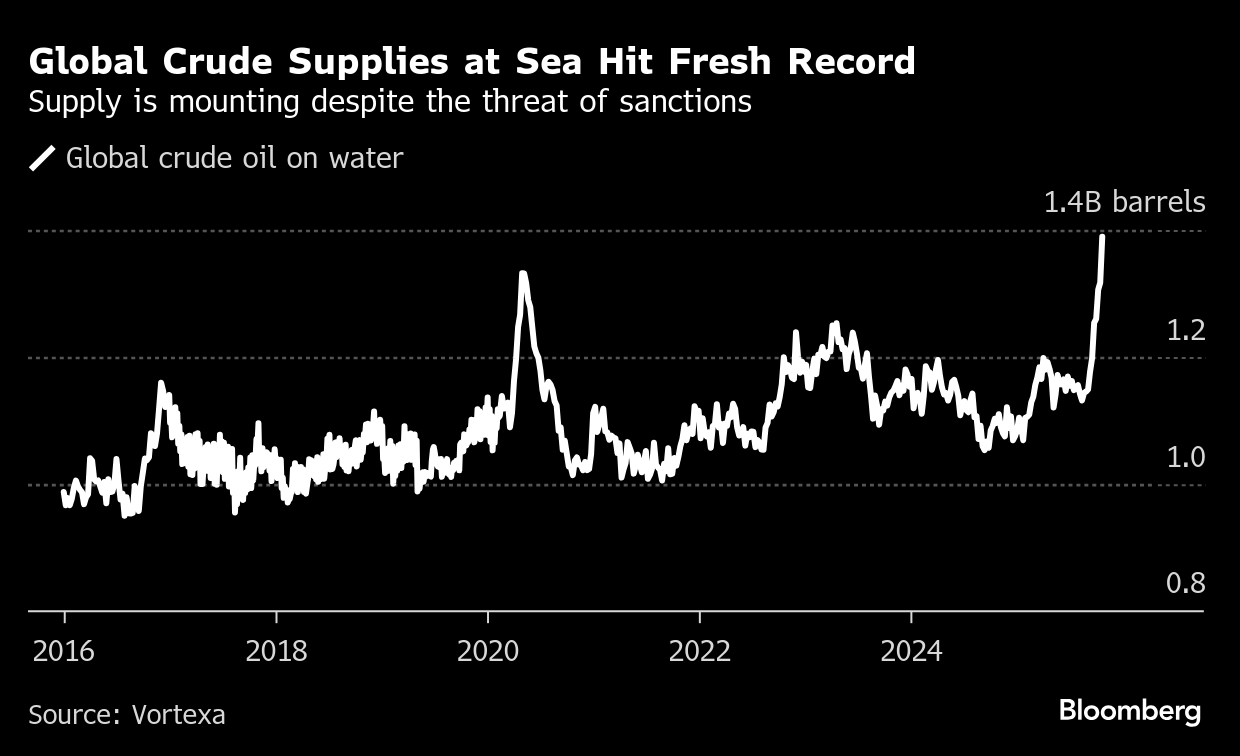Oil Steady as Traders Focus on Glut and Russian Crude Sanctions
(Bloomberg) -- Oil steadied after a two-day drop as investors weighed signs of a glut and the fallout from US sanctions on Russian producers.
Brent traded below $66 a barrel, while West Texas Intermediate was near $61. The amount of oil being shipped across the world’s oceans hit a record high, a sign excess supplies are continuing to mount. In addition, OPEC+ may agree to add more production at a meeting this weekend.

US sanctions against Russia’s biggest oil companies — which lifted crude last week — were also in focus. Washington has floated a six-month deadline for Berlin to sort out the ownership limbo affecting the German assets of Rosneft PJSC. Meanwhile, officials familiar with the matter said the administration’s plan is to make Russia’s trade costlier and riskier, but without spiking prices.
The sanctions “mark a clear shift in the oil narrative — from surplus anxiety to disruption risk,” said Charu Chanana, chief investment strategist at Saxo Markets in Singapore. “Still, unless the sanctions bite harder, or alternative supplies fail to fill the gap, the broader market may treat this as a short-term geopolitical premium rather than a sustained bullish catalyst.”
Oil is headed for a third straight monthly loss as concerns about a surplus weigh on prices, with OPEC+ and rival drillers both stepping up output. Traders are also tracking progress toward a US-China trade deal, with President Donald Trump and his Chinese counterpart Xi Jinping due to meet at a summit on Thursday after negotiators cleared the way for an agreement.
Ahead of the meeting, Trump has said he may raise the issue of Russian oil imports with Xi, given China is a major importer. Following the latest sanctions, some Chinese state-owned companies canceled purchases of seaborne crude from Moscow, while Indian refiners said they would wind down flows. Prices of Russia’s ESPO grade, which ships from the nation’s Far East, have slumped.
©2025 Bloomberg L.P.





